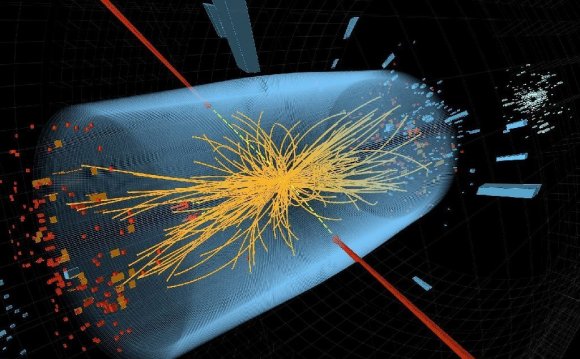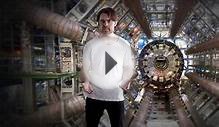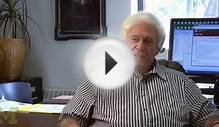
 Greetings from chilly Toronto, where I’m briefly in town to participate in a public event about the Higgs boson tonight. Should be a good time, especially because it’s not just me giving a talk; I will spend 20 minutes explaining the theoretical motivation behind the Higgs, after which experimentalists Pierre Savard and William Trischuk will talk about the actual experiments.
Greetings from chilly Toronto, where I’m briefly in town to participate in a public event about the Higgs boson tonight. Should be a good time, especially because it’s not just me giving a talk; I will spend 20 minutes explaining the theoretical motivation behind the Higgs, after which experimentalists Pierre Savard and William Trischuk will talk about the actual experiments.
Which raises the question: how does one explain the theoretical motivation behind the Higgs, given a small number of minutes and a motivated-but-nonexpert audience? It’s something I should have figured out by now, having written a book and all. But I’ve been fishing around, and I think I’ve finally settled on a favorite approach to doing it.
A couple of preliminary notes. I don’t think there is a good explanation of the Higgs boson at the sound bite level, say 15 seconds or less. That’s because you need to explain two distinct things: first, that there is a Higgs field filling space that interacts with the particles moving through it and giving some of them mass; and second, that the Higgs boson is the particle we observe when we interact with a vibration in that field. Both of these ideas are part of quantum field theory, which we generally don’t try to explain in physics popularizations, so it’s more than a few seconds of work to get them across. But I don’t think there is a shortcut: if you want to explain the Higgs at all, you have to explain the Higgs field.
With that in mind, the biggest stumbling block to providing a convincing popular-level motivation for the Higgs field is that we immediately leap to the idea that the role of the Higgs is to “give particles mass, ” where by “particles” we really mean “quarks, charged leptons, and the W & Z bosons.” This raises a couple of problems. First, why do we need some mechanism to give particles mass? Why can’t they just have mass? Of course some particles can just have mass — like the Higgs itself. So you’re starting off by moving backwards, bringing up the need to explain why different symmetries apparently prevent particles from having mass, which is actually harder to explain than the Higgs mechanism. And second, most of the mass in real objects comes from QCD, not from the Higgs mechanism at all, so you are almost inevitably giving people the wrong idea. You see why it’s a tricky situation.
What is the meaning of pay yourself first? What is seitan? What time does price chopper close? What is the tallest building in the world? What are the best vitamins for women? How to ombre hair? How to open a beer bottle with a lighter tips? What does titi me pregunto mean? What does curate mean? How to gwt nerve feeling on the tips of your finger after injury? in human services who is a better helper What is roi mean? What does bluetooth mean? what is paper towerl holder helper arm Tips on what general education courses to take? Tech deck how to tricks? How do social security tips effect my tax return? What dose smt mean? how to fix mod manager 2 helper application how to reactivate video download helper in chrome How to add egg to ramen? How to rack 9 ball? What does afk mean in fortnite? What is the meaning of freedom of speech? How to get rid of sulfur burps instantly? How to save? what is when someones helper How to draw a rabbit? How to do eyebrows? How to watch black widow? Why do tips of ferns turn brown? What does wep mean? How to do crazy card tricks? How to write a cover letter for a job? How to make a baby stop crying? What does candid mean? How much tips for horseback riding guide? How to delete youtube search history? How to satisfied a man in bed tips? He who tries to save his life will lose it meaning? What time does daylight start? How to get rid of weevils? What is a psychiatrist? highlighter for how fast reading pace should be helper what is active helper setting fs17 ai vehicle extensinoINTERESTING VIDEO











